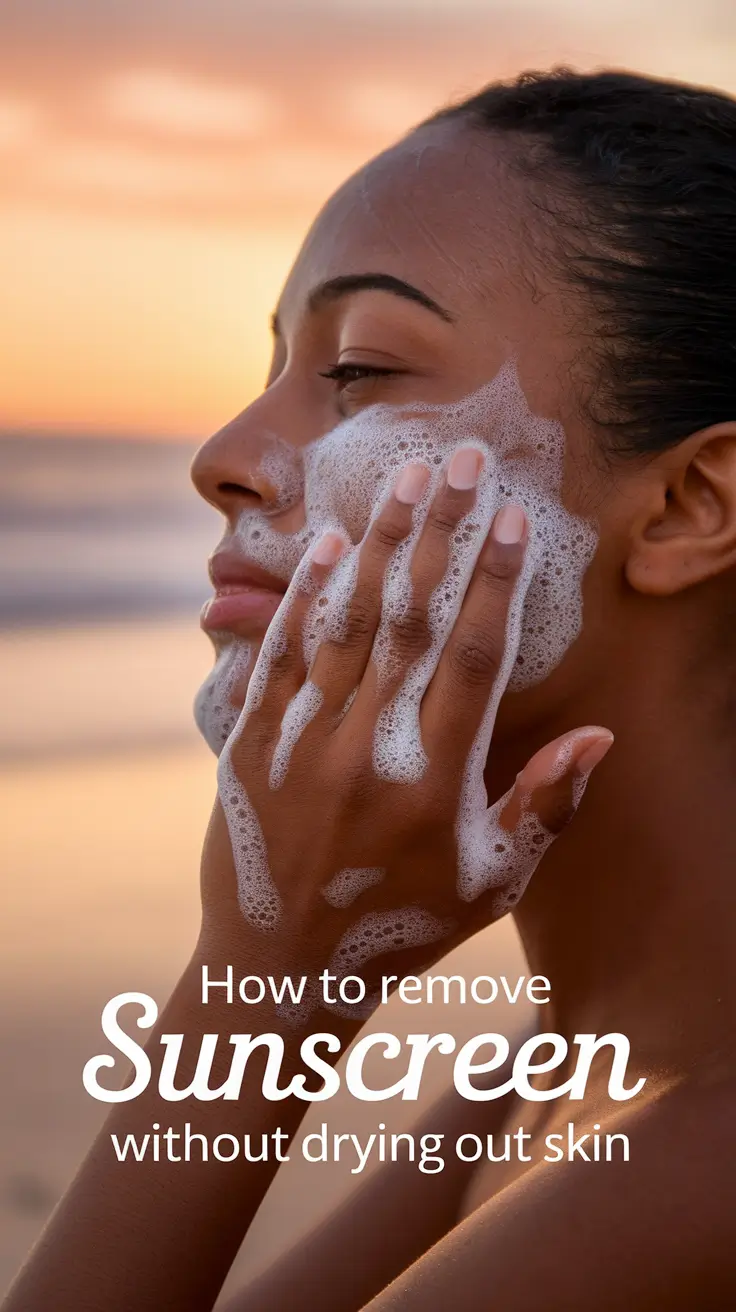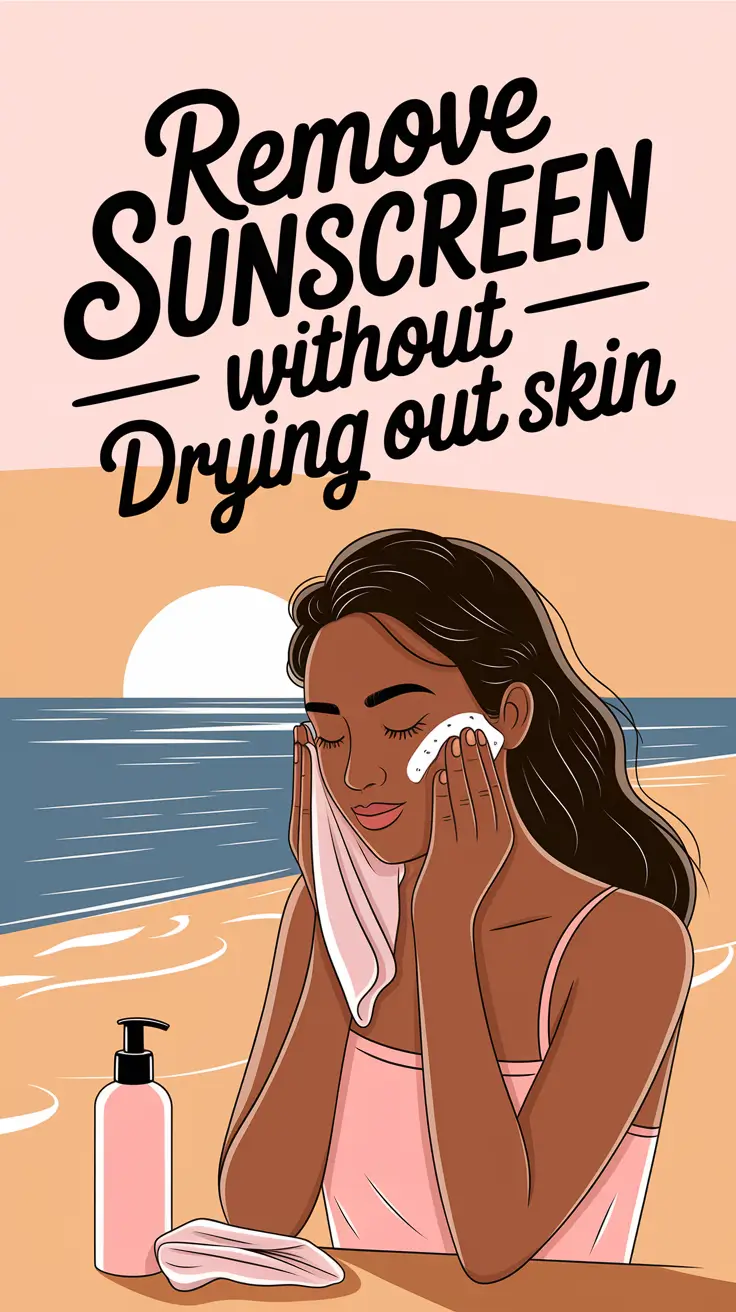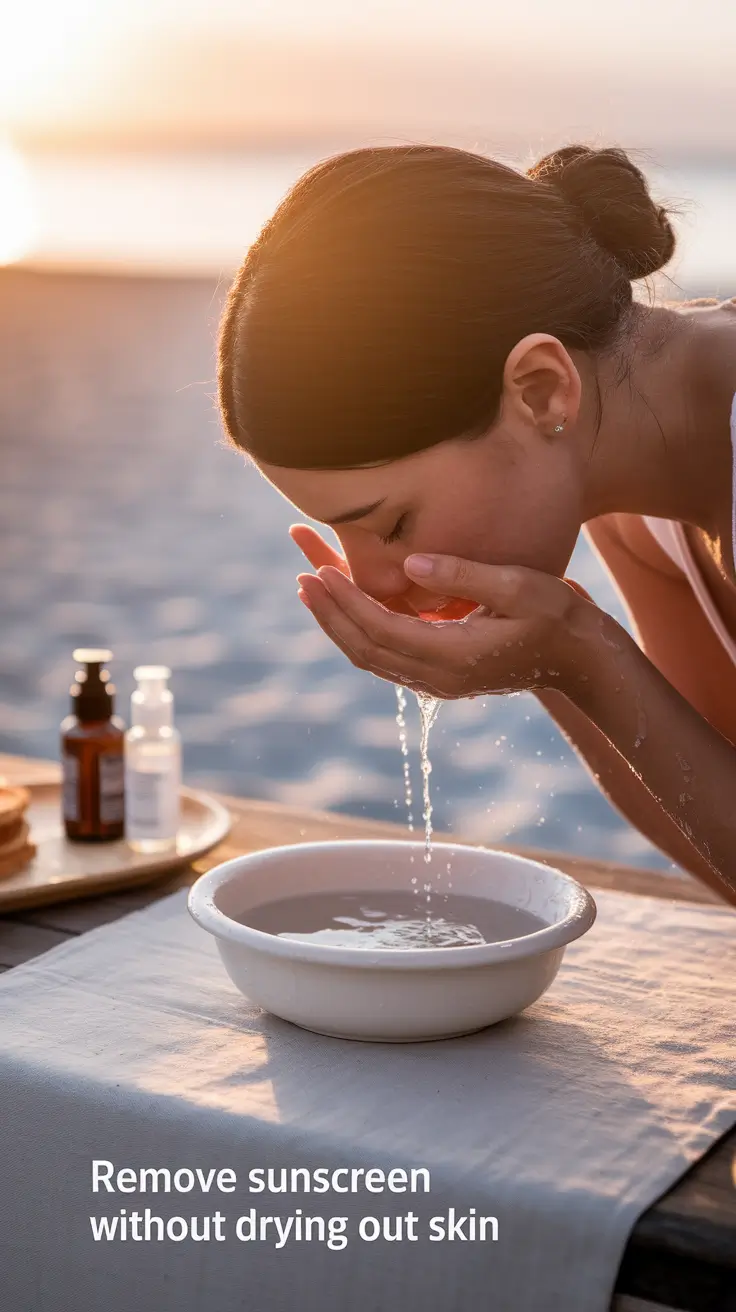
After washing your face at sunset, you might feel an unpleasant film persisting on your complexion. The invisible residue on your skin most likely consists of sunscreen chemicals, which cause damaging effects on your skin barrier when you remove them incorrectly. The surge in SPF usage during 2025 demands proper sunscreen removal techniques because consumers should protect their skin while maintaining its hydration despite extensive education on skin cancer prevention and continuous solar exposure.
The article presents dermatologist-approved strategies to remove any type of water-resistant sunscreen product yet maintains skin’s hydration and balance. This guide implements actual applicable remedies that suit each skin type, including dry and sensitive and oily conditions.
Who is this article for? People who use sunscreen daily need to read this guide along with those who experience cleansing-related dryness and tightness and sunscreen irritation on their skin. This article exists to solve the challenge of finding milder sunscreen application methods if you have ever wondered about alternatives.
Why Proper Sunscreen Removal Matters
What Happens If You Don’t Remove Sunscreen Completely?
The improper removal of SPF causes it to combine with sweat and sebum as well as pollutants to form a pore-blocking mixture. When users fail to cleanse their faces properly after sunscreen application they develop blackheads and breakouts while their skin becomes dull and may produce dermatitis symptoms. The latest sunscreens contain silicones and waterproof elements that resist removal by normal water exposure.
The Hidden Dryness Trigger
Some individuals perform excessive skin washing because they want complete removal of sunscreen from their bodies. Unfortunate skin conditions result from using intense cleansers in addition to incorrect double-cleansing techniques along with rough cleansing practices. The result? Uncomfortable skin with both flakiness and tightness occurs along with a barrier disruption leading to additional complications.
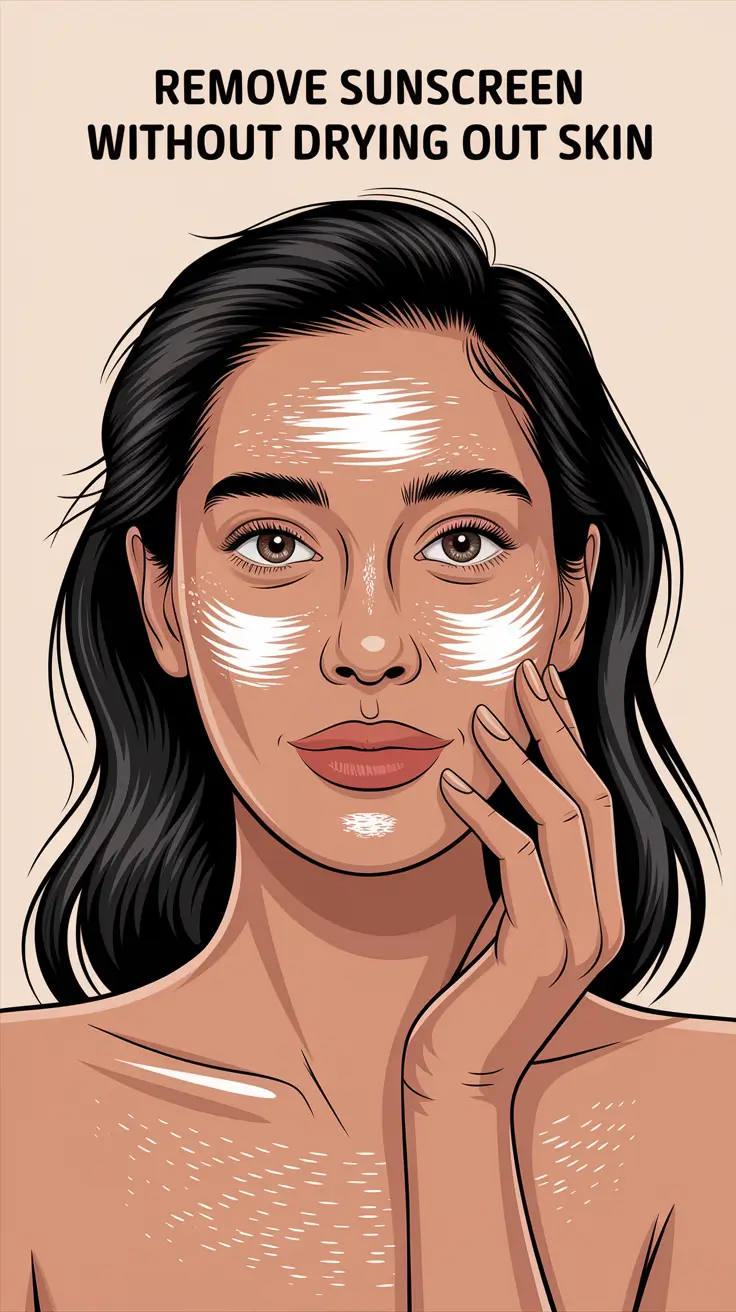
Mistakes That Dry Out Skin During Sunscreen Removal
Let’s start with what not to do.
- Alcohol-based cleansers remove skin moisture and should be substituted with other options.
- Hot water exposure creates a temporary comfort feeling but it harms the skin barrier protection.
- Sunscreens function in an oil-based way and water cannot replace this principle.
- Physical exfoliants, along with rough towels, lead to damage of the outer skin layer.
The Best Way to Remove Sunscreen Without Drying Out Skin
Step 1: Start with an Oil-Based Cleanser
A cleansing oil or balm should be your choice when removing skin products and sunscreen. These break down sunscreen molecules and makeup. Consumers should seek cleansing products with jojoba oil or squalane or sunflower oil among their ingredients list. People with acne problems should stay away from using mineral oil as a cleanser.
- Massage gently onto dry skin for 30-60 seconds.
- Add a little water to emulsify.
- Rinse thoroughly.
Step 2: Follow with a Gentle Water-Based Cleanser
This second step removes any leftover residue.
- Opt for sulfate-free gel or cream cleansers.
- Ideal ingredients: glycerin, panthenol, chamomile.
- Avoid foaming agents if your skin is already dry.
Step 3: Pat Skin Dry and Rebalance Immediately
- Use a soft towel, gently patting (not rubbing).
- Apply a hydrating toner or thermal mist.
- Continue with your moisturizer while your skin is still damp.
Top Products for Gentle SPF Removal in 2025

Here’s a list of the most dermatologist-recommended options this year:
| Product | Type | Key Ingredients | Skin Type | Price |
|---|---|---|---|---|
| DHC Deep Cleansing Oil | Oil | Olive Oil, Vitamin E | All, even sensitive | $28 |
| Heimish All Clean Balm | Balm | Shea Butter, Tea Tree | Combination, oily | $17 |
| CeraVe Hydrating Cleanser | Gel | Ceramides, Hyaluronic Acid | Dry, normal | $15 |
| La Roche-Posay Toleriane | Cream | Glycerin, Niacinamide | Sensitive | $19 |
| Banila Co Clean It Zero | Balm | Papaya Extract, Vitamin C | Normal, combo | $22 |
Alternative Methods to Remove Sunscreen (If You’re In a Pinch)
Sometimes you don’t have your usual skincare tools. Here are gentler alternatives:
- Micellar Water: Great for a quick cleanse. Choose alcohol-free versions.
- Milk Cleansers: Especially beneficial for dry or mature skin.
- Natural oils: Like jojoba or almond oil, followed by a warm wet cloth.
What to Do After Cleansing to Lock in Moisture
Rehydration Is Essential
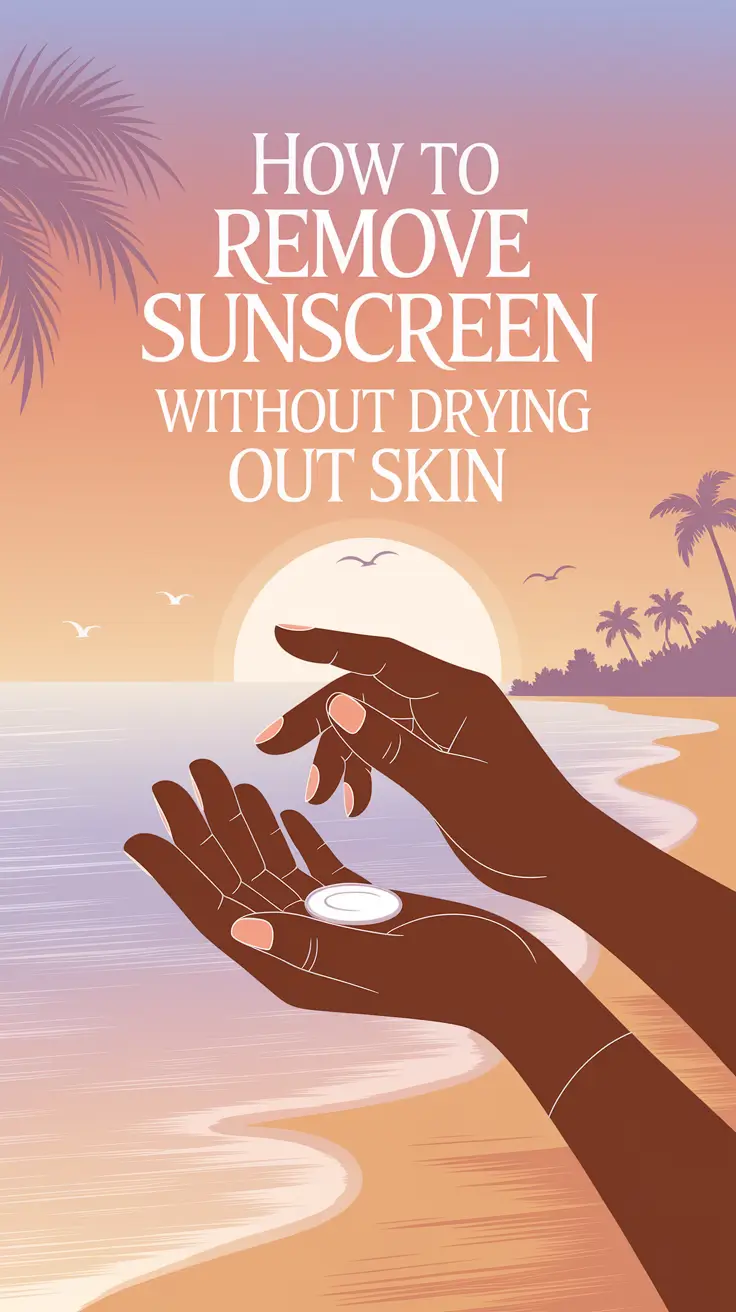
Right after cleansing, your skin is most receptive to hydration. Don’t wait until it feels dry!
- Apply a toner with hyaluronic acid.
- Use a barrier-supporting serum—look for ceramides or peptides.
- Moisturize generously with a cream suited to your skin type.
Evening Routine for Repair
Night is prime time for skin repair. Here’s a simple 3-step routine:
- Hydrating serum (e.g., with panthenol or centella asiatica).
- Barrier cream or overnight mask.
- Optional: Face mist before bed to seal in moisture.
Recent Innovations: Easier-to-Remove SPF in 2025
- Enzyme-reactive SPFs: New Japanese formulas that dissolve more easily.
- Micelle-based sunblocks: Formulations that rinse off without oil.
- Hybrid products: SPF + skincare in one, for easier evening routines.
Final Takeaways: How to Remove Sunscreen Without Drying Out Skin
- Double cleansing is your best friend—just do it gently.
- The oil step is not optional for waterproof sunscreens.
- Always rehydrate and protect your barrier after cleansing.
Want glowing, comfortable skin and daily SPF protection? It’s entirely possible. Just cleanse smarter, not harder.
